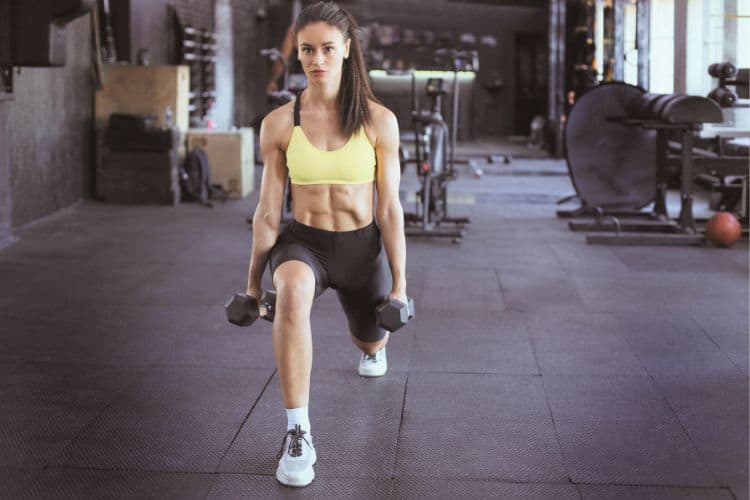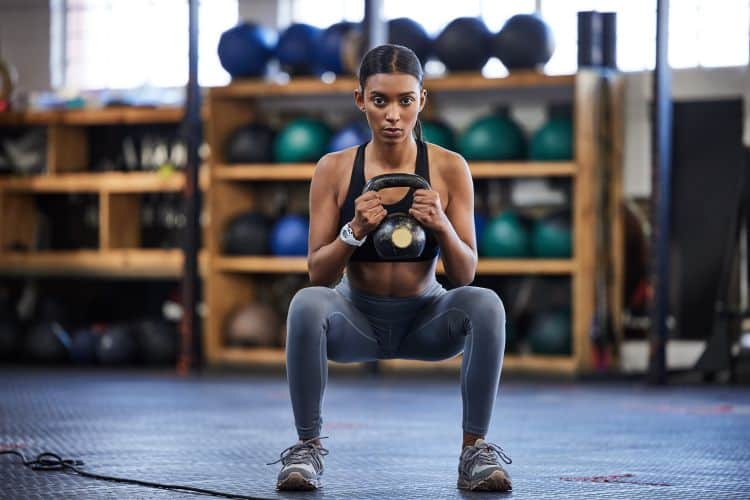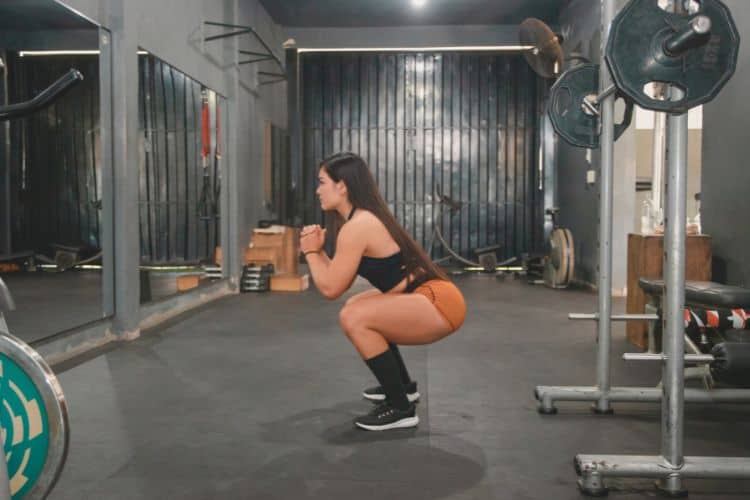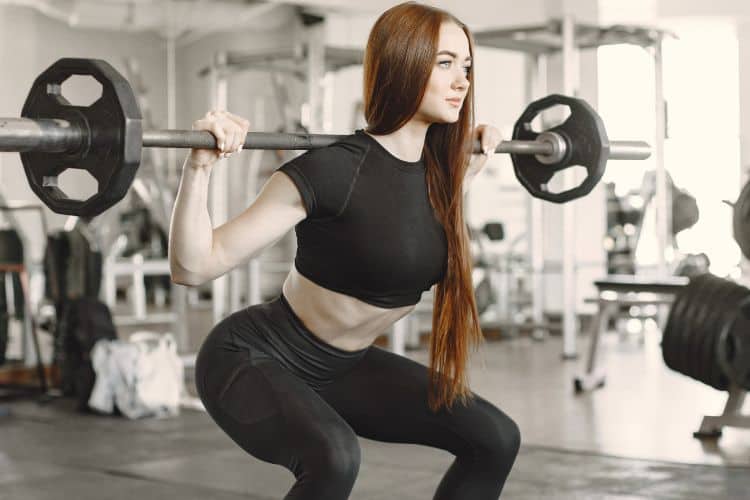Sign up for workout ideas, training advice, reviews of the latest gear and more.






Busy schedules, kids, work commitments, or simply the preference for home comfort, there are numerous reasons why hitting the gym might not always be feasible for every woman. But here’s the great news: you don’t need fancy gym equipment or a hefty membership fee to get in a powerful workout. With High-Intensity Interval Training (HIIT), you can torch calories, improve cardiovascular health, and build strength right in your living room. This guide provides a simple yet effective no-equipment HIIT at home workout tailored for women.
What is HIIT?
HIIT stands for High-Intensity Interval Training. It involves short bursts of high-intensity exercises followed by a rest or low-intensity period. This combination of intense activity with recovery intervals effectively boosts metabolism, burns fat, and enhances cardiovascular health in a shorter time than traditional workouts.
Benefits of HIIT
Efficiency: A 20-minute HIIT session can be more effective than an hour of steady-state cardio.
Burns Calories After the Workout: Thanks to the ‘afterburn’ effect or Excess Post-exercise Oxygen Consumption (EPOC), your body continues to burn calories post HIIT.
No Equipment Needed: While there are HIIT workouts that incorporate weights, many exercises use only body weight, making it perfect for at-home routines.
Improves Heart Health: HIIT can help lower blood pressure and heart rate, especially in overweight or obese individuals.
Challenges All Levels: Whether you’re a newbie or a fitness enthusiast, HIIT routines can be adapted to challenge all fitness levels.
Here’s a beginner-friendly HIIT routine to get you started:
Warm-Up (5 minutes)
HIIT Circuit (Repeat this circuit 3 times with a 1-minute break between each round)
Burpees (30 seconds): Begin in a standing position, drop into a squat, placing your hands on the ground. Kick your feet back into a plank position, do a push-up, then return to the squat position and leap into the air. Rest for 30 seconds
Start in a plank position. Bring one knee towards your chest and then quickly switch to the other knee, as if you’re climbing. Rest for 30 seconds
Squat Jumps (30 seconds): Start in a squat position and explosively jump up, extending your legs and pointing your toes. Land softly and go back to the squat position. Rest for 30 seconds
Push-Ups (30 seconds): Begin in a plank position, with your arms straight. Lower your body until your chest nearly touches the floor. Push yourself back up. Rest for 30 seconds
Plank to Alternating Toe Touch (30 seconds): Begin in a plank position. Lift your right hand off the ground and touch your left foot, then return to plank. Repeat with the opposite hand and foot. Rest for 1 minute before starting the next round
Cool Down (5 minutes)
Focus on Form: Rather than speed, ensure you’re executing each movement with the correct form to avoid injuries.
Stay Hydrated: Drink plenty of water before, during, and after the workout.
Listen to Your Body: If something doesn’t feel right, stop. There’s a difference between challenging yourself and hurting yourself.
Consistency is Key: Aim for 2-3 HIIT sessions per week for optimal results.
While the above workout serves as a starting point, understanding the deeper aspects of HIIT can empower you to make the most out of your sessions. So, let’s delve a little deeper into the world of HIIT and see how you can adapt and customize it for your unique needs.
Understanding Your Body and HIIT
It’s essential to recognize that women’s bodies are different from men’s in several ways. Hormonal fluctuations can affect energy levels, recovery times, and metabolism. Therefore, listening to your body is even more critical. For instance, during certain periods of your menstrual cycle, you might feel more fatigued. Instead of pushing for an intense HIIT session, consider a moderate or low-intensity workout.
Vary the Intervals: The beauty of HIIT is its adaptability. If the traditional 30 seconds on, 30 seconds off is too challenging, start with 20 seconds of work and 40 seconds of rest. As your stamina improves, adjust the intervals to increase intensity.
Introduce New Moves: The body adapts quickly to repetitive movements. To prevent plateaus and continue seeing results, introduce new exercises every few weeks. Some options include:
Incorporate Functional Movements: Functional exercises mimic everyday activities and engage multiple muscle groups. Examples are squats (think of sitting down and standing up) or push-ups (similar to pushing an object away).
Even though this article focuses on no-equipment HIIT, adding resistance (once you’re comfortable) can significantly boost your results. This doesn’t mean investing in heavy weights. Household items like water bottles or bags of rice can serve as effective weights.
Nutrition and HIIT
Given the intensity of HIIT, fueling your body right is paramount. Ensure you:
Stay Hydrated: Drink water before, during, and after your workout. Hydration aids in muscle function and recovery.
Consume Protein Post-Workout: After a HIIT session, your muscles are like sponges — ready to absorb nutrients for recovery. A protein-rich snack or shake can help repair and grow muscles.
Carbs are Your Friend: Carbohydrates fuel your workouts. Including a good source of complex carbs, like oats or brown rice, can provide the energy needed for HIIT.
It’s not all about the physical. The mental benefits of HIIT are equally compelling:
Endorphin Release: HIIT workouts trigger the release of endorphins — natural mood lifters. That’s why you often feel a ‘high’ post a challenging session.
Improves Mental Resilience: Pushing through a tough HIIT workout trains your mind to handle other challenges in life. It’s a mental muscle being flexed.
Reduces Stress: Physical activity, especially intense ones like HIIT, can reduce stress hormones and trigger a relaxation response in the body.
There’s no one-size-fits-all in fitness. What works for one might not work for another. The beauty of HIIT, especially for women, is its adaptability. Whether you’re a stay-at-home mom squeezing in a workout during nap time, a young professional juggling work and social life, or navigating the challenges of mid-life changes, HIIT offers the flexibility to mold your workout as per your needs.
Incorporate the tips mentioned, listen to your body, fuel it right, and most importantly, enjoy the process. Fitness is a journey, not a destination. And every sweaty, heart-pumping HIIT session is a step forward on that journey. Cheers to your health and well-being!
Stay up to date on the latest women’s health, fitness and lifestyle trends and tips.